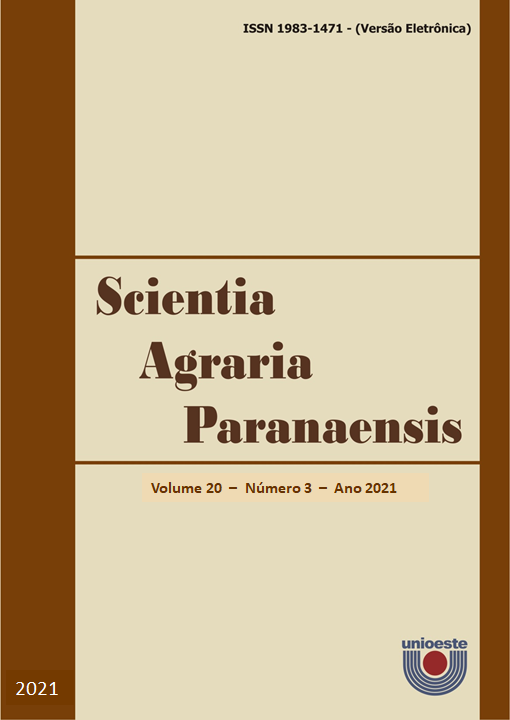Physicochemical analysis of a gongocomposite in the initial production of crisp lettuce seedlings
DOI:
https://doi.org/10.18188/sap.v20i3.27880Resumo
Tree pruning in urban centers generates residues, which can be used as organic composites in the production of crisp lettuce seedlings. Given the above, the aim of this work was to perform a physicochemical analysis of the gongocomposite in the production of crisp lettuce seedlings. The experiment was carried out in a rural property in Reserva do Cabaçal-MT, with a completely randomized design comprising five treatments and five replications. To obtain the substrates, the gongocomposite was made from Trigoniulus corallinus, in the following proportions: 40% of Paspalum notatum (grass) + 30% of the pruning residues of tree species Terminalia catappa, Licania tomentosa, Senna siamea, and Albizia lebbeck composed of leaves, leaflets, and fine branches, dried and crushed, where the process lasted 120 days. Substrates were evaluated regarding physical and chemical properties. At 24 days after sowing, shoot fresh and dry mass, root fresh and dry mass, root volume, seedling vigor, and stability of lettuce clods were measured. The gongocomposite from the grass (Paspalum notatum) + oiti + albizia (40% + 30% pruning residues + 30% pruning residues) presented better physicochemical characteristics and better initial development of lettuce seedlings.
Downloads
Publicado
Como Citar
Edição
Seção
Licença
Aviso de Direito Autoral Creative Commons
Política para Periódicos de Acesso Livre
Autores que publicam nesta revista concordam com os seguintes termos:
1. Autores mantém os direitos autorais e concedem à revista o direito de primeira publicação, com o trabalho simultaneamente licenciado sob a Licença Creative Commons Attribution que permite o compartilhamento do trabalho com reconhecimento da autoria e publicação inicial nesta revista.2. Autores têm autorização para assumir contratos adicionais separadamente, para distribuição não-exclusiva da versão do trabalho publicada nesta revista (ex.: publicar em repositório institucional ou como capítulo de livro), com reconhecimento de autoria e publicação inicial nesta revista.
3. Autores têm permissão e são estimulados a publicar e distribuir seu trabalho online (ex.: em repositórios institucionais ou na sua página pessoal) a qualquer ponto antes ou durante o processo editorial, já que isso pode gerar alterações produtivas, bem como aumentar o impacto e a citação do trabalho publicado (Veja O Efeito do Acesso Livre).
Licença Creative Commons
Esta obra está licenciada com uma Licença Creative Commons Atribuição-NãoComercial-CompartilhaIgual 4.0 Internacional, o que permite compartilhar, copiar, distribuir, exibir, reproduzir, a totalidade ou partes desde que não tenha objetivo comercial e sejam citados os autores e a fonte.


